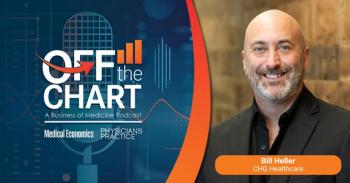
Hypertension Coding in the Age of Quality
How do physicians need to manage hypertension - from a coding perspective - in the age of quality-based care?
The hypertension "epidemic" hearkens back to boxer Joe Louis' words regarding a smaller, quicker opponent - light heavyweight Billy Conn, "You can run, but you can't hide!"
No matter what specialty of medicine or surgery you practice, or whether you are a primary-care provider, elevated blood pressure represents a recurring problem that will not go away. Furthermore, hypertension is often accompanied by comorbid conditions such as diabetes mellitus, obesity, CKD-3, and systolic dysfunction which complicates blood pressure treatment,
The downside of this epidemic is clear, untreated blood pressure is fraught with multiple target organ complications. In fact, approximately 80
Since the management of hypertension is both demanding and iterative - often squeezed into a 20-minute time slot amidst a bewildering array of A1Cs, and other health maintenance requirements - identifying and treating blood pressure appropriately should be rewarded. There is no doubt that blood pressures below target are a laudable goal adding quality years to patients' lives. But on another level, does all the time and effort dedicated to hypertension improve a hardworking physician's bottom line?
Financial Incentives
A recent article in
Participating providers will report six quality measures contributing to their overall "Quality" score. Additional measures are available beyond the six, presenting more opportunity to improve the Quality component of their total score. One way quality can be demonstrated is by successfully controlling hypertension in a patient population. Furthermore, hypertension is a "High Priority Quality Measure," giving providers the chance to accrue additional bonus points adding to their overall score. It's essentially extra credit. These accumulated bonus points through the reporting of additional measures can represent up to 10 percent of the overall Quality Score. Since quality is the most impactful factor/contributor to the MIPS Composite Performance Score (representing 50 percent weight in calculation of MIPS score for the first few years of the MACRA program), the impact of these bonus points can be financially significant.
HCC Opportunity
That's not all though. There may also be an opportunity and benefits to promoting accurate documentation of hypertension when elevated blood pressure is present with other comorbidities. These may include Hypertensive Chronic Kidney Disease Stages 1-4 and ESRD, Hypertensive Heart Disease with/without Heart Failure. Such comorbidities affect how hypertension as a diagnosis should be coded and can also play a role in a provider's Hierarchical Condition Category (HCC) rating. Accurate calculation of HCC rating by the correct coding of Hypertensive disease and its context amidst other diseases can also lead to a positive payment adjustment from payers participating in this diagnosis-based risk adjustment model. EHR alerts that promote the proper coding of hypertensive diseases may help in this regard.
The accuracy of a patient's HCC value will affect payment adjustments for certain patient populations in the upcoming years. In its simplest form, the HCC value serves as a year to year estimation of how much the care of an individual should cost, which has an effect on reimbursement for that care. The more accurate the HCC value, the better a practice can ensure appropriate and fair reimbursement for the care that patient requires over time.
If recent changes are predictive, third -party payer will stop rewarding quantity, such as following a patient for hypertension every two months, not achieving target blood pressures, and expecting full reimbursement for each visit. The new paradigm is quality not quantity. The accurate diagnosis, effective management, and proper reporting of chronic conditions such as high blood pressure will define the quality and effectiveness of the care provided and drive reimbursement and bonuses for that care.
Coding Education for Hypertension
The most commonly used Hypertension diagnosis code is I10-Essential Hypertension. This diagnosis, and consequent management will drive the High Priority Quality Measure.
What happens when hypertension is diagnosed in combination with conditions like Heart Failure, CKD, or Heart Disease? In these situations, the coding of Hypertension actually changes.
Why are these code distinctions important? The proper coding of hypertensive diseases-especially context and comorbidities - may significantly effect HCC values. The accuracy of this value will determine proper and fair reimbursement from participating payers. The more accurate our diagnosis code selection, the more accurate our reimbursement rates.
Newsletter
Optimize your practice with the Physicians Practice newsletter, offering management pearls, leadership tips, and business strategies tailored for practice administrators and physicians of any specialty.








